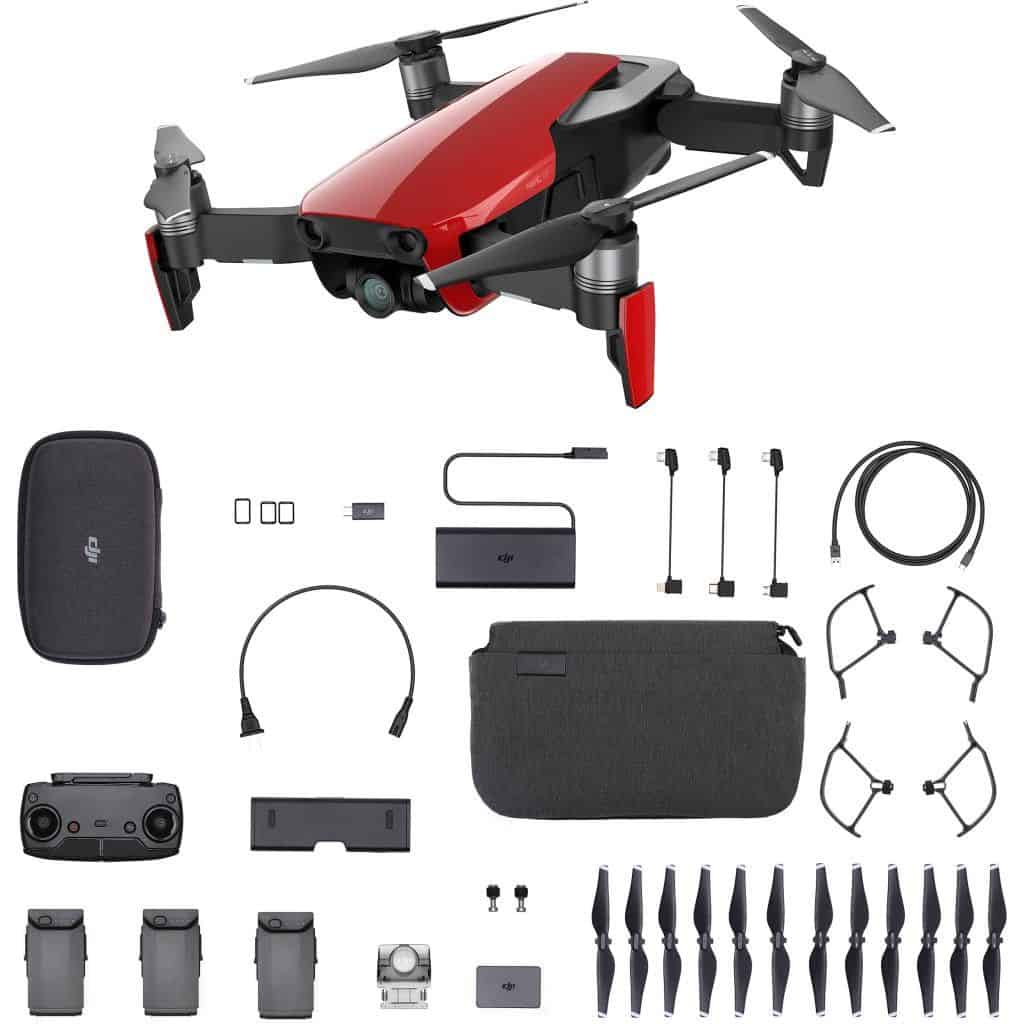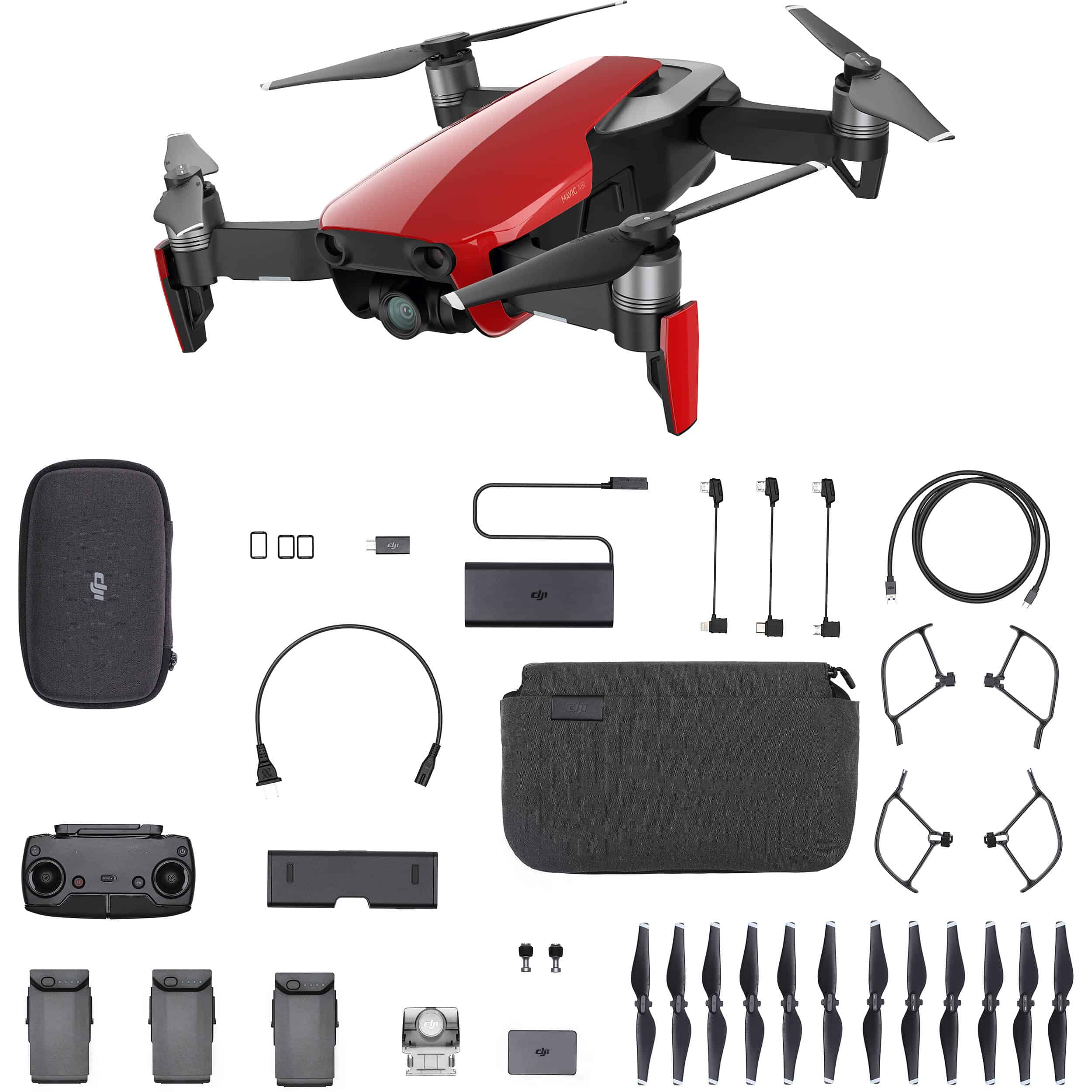Table of Contents
amazon DJI Mavic Air reviews
For now, the latest trends in the drone sector are favoring DJI. Their share of the entire market is more than 70%, with Yuneec, Parrot, and GoPro trying to survive. However, DJI is not going to sit back. Just one year in the travel drone segment, DJI launched three drone models with compact design, reasonable price, and smart flying features.
DJI Mavic Air was introduced into the market when DJI Spark and DJI Mavic Pro were the bees knees.
Mavic Air in some ways aims to bridge the market gap between Spark ($550) and Mavic Pro ($1000). Facing sheer indecision behind the shadow of the Mavic Pro, is the $200 price difference with the smart features of the Mavic Air enough to shove it before its predecessor as the most worthy buy in the market now?
The design
Retaining the wing design again proved that Mavic Air is still the working center of DJI, collapsing the already “tiny” design of Mavic Pro but still packing in impressive features. The Mavic Air carries a three-axis vibration absorbing mechanical gimbal rig (by comparison, Spark has two), anti-collision sensors, and killer smart flight features.
Mine still looking chic but sporty from the angular looks of the Mavic Pro. Aerodynamic design allows the Mavic Air to fly faster than the Mavic Pro. The Mavic Air has an almost identical gimbal design to the DJI Spark but has been upgraded with anti-vibration features and is now recessed deeper into the body of the drone for added protection during a crash. Clearly such size of gimbal is so delicate that DJI’s caution is not redundant.
The Mavic Air performs with great stability: Combined with a VPS and an intuitive sensor system, Mavic Air maintains an outstanding level of stability in both outdoor and indoor working conditions.
On the other hand, Mavic Pro has shown its edge against strong winds due to its bigger size and more powerful motors. The Mavic Air is able to withstand the gusts but not nearly as well as the Mavic Pro. An enhancement to DJI Spark, the smart flight capabilities of the Mavic Air allow for hand gesture flight commands for take-off, change-of-shooting-angle, approach and landing. In actual service, I believe, this kind of feature could take a long time and effort for DJI to implement. However, the features in the Mavic Air give hope for drones that do not need remotes; another would-be-biometric feature added onto the Mavic Air that just might make it stand out is obstacle avoidance that works while in-flight. While the Mavic Pro would stop dead in its path and await the user’s next move, the Mavic Air would think on its feet and sidestep all the barriers in its path. Therefore it does a lot for Mavic Air’s Active Track in terms of efficiency.
One of Mavic Air’s greatest improvements over Mavic Pro is its camera quality. Still maintaining a 1/2.3 sensor size, Mavic Air is less bright than Mavic Pro. Nevertheless, the improvements in processing algorithms applied and higher video bit rate have caused large improvements in image quality. The color reproduction of still images has also improved, with the jagged noise artifacts being highly reduced in Mavic Air video compared to Mavic Pro.
where can you get a DJI Mavic Air online
DJI Mavic Air, Onyx Black Portable Quadcopter Drone: Buy it now
DJI Mavic Air, Fly More Combo, Onyx Black: Buy it now
DJI Mavic Air Fly More Combo, Onyx Black Portable Quadcopter Drone: Buy it now
DJI Mavic Air, Flame Red Portable Quadcopter Drone: Buy it now
DJI Mavic Air Fly More Combo, & DJI Goggles (Flame Red): Buy it now
Wave quality and battery life
Though the wave quality of Mavic Air is fa below that of its predecessor. Using the same technology connection to the DJI Spark, Mavic Air’s interference and control cannot be compared with Mavic Pro employing DJI’s proprietary OccuSync connection. In 2.4 Ghz bandwith, range of control of Mavic Air is somewhat shortened compared to 4KM according to DJI.
The Mavic Air battery life feels pretty close to the advertised numbers: 20 minutes in no-wind situations. Battery performance is good, but when compared to Mavic Pro, it loses some luster.
Conclusion
All said, the extra $200 saved on Mavic Air compared to Mavic Pro draws my attention even more, especially if the flyer is your first camera. On the contrary, If you are the owner of Spark or Mavic Pro and are considering upgrading, then waiting further for Mavic Pro 2 to launch will perhaps be a good option. That would seem more tenable consideration since the Mavic Pro 2 launching is not that far off.

